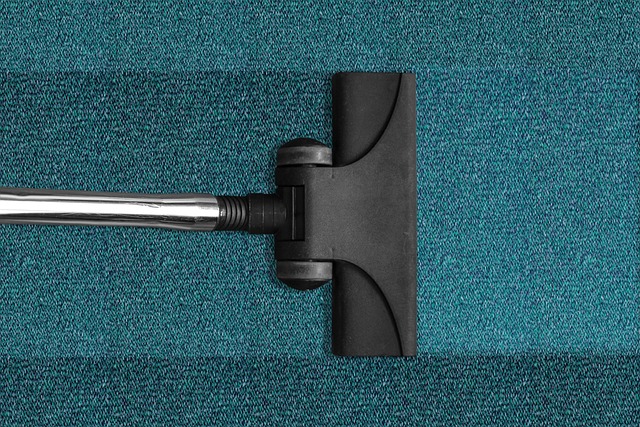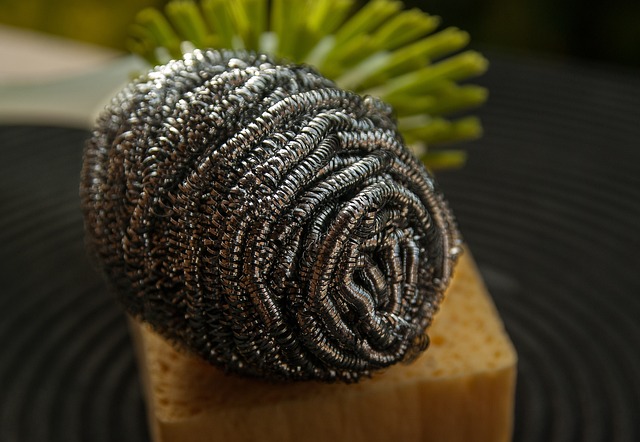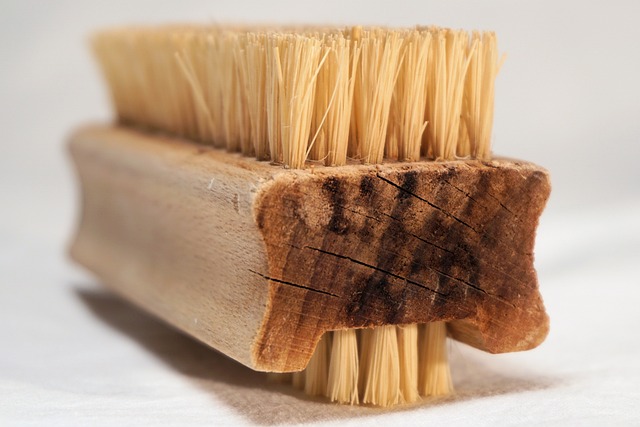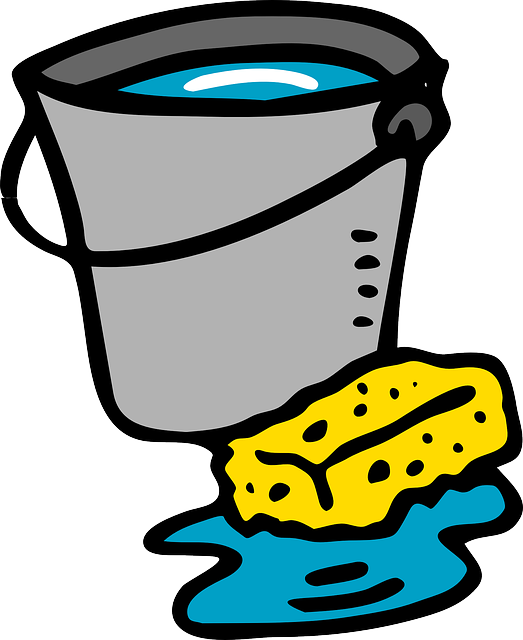Understanding your flooring material (tile, hardwood, vinyl, linoleum) is key to effective cleaning. Use appropriate cleaners and tools like vacuum cleaners, mops, and microfibre cloths tailored for each type. Regular cleaning involves sweeping/vacuuming, while deep cleaning includes scrubbing, deodorizing, and stripping/resealing every 3-6 months. Test cleaning solutions on hidden areas first. Eco-friendly options like vinegar, baking soda, and essential oils are effective and safe. For high-traffic areas, daily sweeping/vacuuming, mild detergent mopping, and regular drying prevent damage and maintain hygiene.
“Uncover the secrets to achieving spotless floors with our comprehensive guide to tile and floor cleaning. From understanding diverse floor types and their unique cleaning requirements, to mastering essential tools and eco-friendly solutions, this article is your go-to resource. Learn the distinction between deep cleaning and regular maintenance for optimal results. Discover step-by-step cleaning methods tailored to various surfaces, and gain top tips to keep floors not just clean but sanitised. Master the art of floor cleaning today!”
Understanding Different Types of Floors and Their Cleaning Needs

When it comes to floor cleaning, understanding the unique characteristics and materials of your flooring is key. Different types of floors, such as ceramic tile, hardwood, vinyl, or linoleum, each have distinct cleaning requirements. For instance, ceramic tiles may require a gentle touch with pH-neutral cleaners due to their porous nature, while hardwood floors demand a more meticulous approach to avoid water damage and wood warping. Vinyl and linoleum floors, being moisture-resistant, can often be cleaned with mild detergent solutions.
Regular cleaning routines should consider these variances to maintain the integrity of each floor type. Proper floor cleaning involves selecting appropriate tools and products, ensuring adequate ventilation, and following specific guidelines for each flooring material. This tailored approach ensures not only the aesthetic appeal but also the longevity of your floors.
Essential Tools and Equipment for Effective Floor Cleaning

When it comes to efficient floor cleaning, having the right tools is paramount. The essentials for any floor cleaning kit include a high-quality vacuum cleaner designed for hard floors, which helps remove dirt and debris effectively while minimizing scratch risk. Additionally, a mop with adjustable water levels and a variety of compatible cleaning solutions are must-haves. Microfibre cloths and squeegees are also crucial for spotless results without leaving streaks or residue.
For more detailed cleaning, consider investing in specialized tools like floor scrubbers and steam cleaners. These machines are excellent for tackling tough stains and deep cleaning hardwood or tile floors. Furthermore, a good pair of knee pads can make the process more comfortable, especially during prolonged cleaning sessions. With these essential tools at hand, you’re well-prepared to tackle any floor cleaning challenge.
Deep Cleaning vs Regular Maintenance: What You Need to Know

Deep cleaning and regular maintenance are both essential aspects of keeping floors in top condition, but they serve different purposes. Regular floor cleaning involves routine tasks like sweeping, mopping, or vacuuming to remove daily dirt and grime. This maintains the floor’s appearance and prevents minor issues from becoming major problems.
In contrast, deep cleaning goes beyond surface-level sanitation. It includes thorough scrubbing, deodorizing, and sometimes stripping and resealing the floor. This process targets built-up stains, bacteria, and germs that regular maintenance might miss. Deep cleaning is recommended every 3-6 months or as needed to ensure optimal floor health, while regular maintenance should be a weekly or bi-weekly habit for best results in terms of floor cleaning.
Step-by-Step Guide to Cleaning Various Floor Surfaces

Cleaning different floor surfaces requires tailored approaches for optimal results and to preserve their aesthetics. Here’s a step-by-step guide to effectively cleaning various floors:
1. Identify the Floor Type: Different materials like tile, hardwood, laminate, or carpet necessitate distinct cleaning techniques. Start by identifying your floor type accurately.
2. Prepare Your Cleaning Solutions: Mix warm water with suitable cleaning agents designed for your specific floor surface. For tiles and hard floors, a mild detergent or vinegar-water solution often works best. Carpets may require specialized solutions to tackle deep-seated dirt.
3. Vacuum or Sweep Regularly: Before deep cleaning, vacuum or sweep your floors to remove loose debris and dust, ensuring better absorption of cleaning solutions and minimizing scratch risks.
4. Test Cleaning Solutions in a Small Area: Always conduct spot tests on a small, hidden area first to ensure the chosen solution won’t damage or discolor your floor.
5. Clean According to Surface:
– Tiles & Grout: Use a brush with soft bristles and your cleaning solution to scrub tiles and grout lines thoroughly. Rinse well with clean water afterward.
– Hardwood Floors: Sweep or vacuum gently, then mop with the recommended solution, rinsing frequently to avoid residue build-up.
– Carpets: For deep cleaning, use a carpet cleaner or steam washer suitable for your carpet type, following manufacturer instructions.
6. Rinse and Dry Thoroughly: After cleaning, thoroughly rinse all floors and ensure they’re completely dry to prevent water damage or mold growth.
Natural and Eco-Friendly Cleaning Solutions for Floors

When it comes to floor cleaning, opting for natural and eco-friendly solutions is an excellent way to keep your spaces sparkling while also being kind to the environment. Many conventional cleaning products contain harsh chemicals that can not only be harmful to your health but also contribute to water pollution. Fortunately, there are numerous natural alternatives available today that offer just as effective floor cleaning without these negatives.
Essential oils, for instance, are powerful cleaners and natural deodorizers. Lemons and vinegar are other popular choices, with their acidity helping to cut through grease and grime. Baking soda is another versatile ingredient, useful for scrubbing and deodorizing. These simple, affordable solutions not only clean but also leave a fresh, lasting scent without the need for artificial fragrances.
Top Tips for Maintaining Clean and Sanitary Floors

Keeping your floors clean and hygienic is essential, especially in high-traffic areas. Regular floor cleaning is a simple yet effective way to maintain a healthy environment. Start by sweeping or vacuuming daily to remove loose dirt and debris. This initial step prevents particles from settling and makes deep cleaning more efficient.
Invest in a good quality floor cleaner suitable for your flooring type, whether it’s hardwood, tile, or vinyl. Use warm water and mild detergent; avoid excessive use of harsh chemicals which can damage the surface. For tough stains, apply a small amount of cleaner directly and scrub gently with a soft-bristled brush. Regular mopping and drying will prevent water damage and keep your floors looking fresh.
